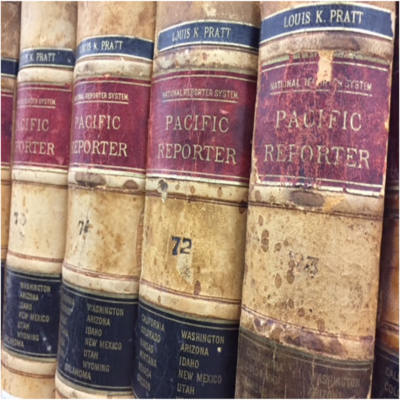Lawsuits and Non-criminal Court Procedures
Lawsuits and Non-criminal Court Procedures

A lawsuit is a claim or dispute brought to the court system by a person or group, called the plaintiff, against another person or group, called the defendant. The plaintiff asks the court to order the defendant to do something like pay damages, or to stop doing something that causes harm to the plaintiff. For example, the plaintiff could ask the court to order the defendant to pay for injuries caused in an automobile accident. The plaintiff could also ask the court to order the defendant to move out of a rental unit if the defendant has not paid the rent when due.
Except for criminal cases, in which the government accuses a defendant of committing a crime, lawsuits are called civil cases. See section 1 of this guide for more information about criminal cases. Civil cases include divorces, landlord/tenant disputes, contract disputes, personal injuries and other injuries that are physical or financial. Civil lawsuits are most often disputes between two individuals or groups of individuals, and do not involve the government.
Generally, a civil lawsuit has one or more plaintiffs, defendants, lawyers, and a judge. Often the plaintiff brings a lawsuit, or sues the defendant because the plaintiff thinks the defendant has injured him or her. The plaintiff and the defendant are called the parties to the lawsuit. The plaintiff and the defendant can each have a lawyer. Lawyers are trained in the law and the court procedures for lawsuits, and how to argue for their clients. The judge oversees the whole lawsuit process.
To bring a lawsuit, the plaintiff files a document called a complaint with the court. The complaint explains what the dispute is about and states what relief the plaintiff is asking for. The defendant then has a chance to file a document called an answer. The defendant can argue that he or she is not to blame, that the plaintiff was not injured, or that the law does not hold him or her to blame.
The parties may conduct discovery, which means collect information from each other and other persons as permitted by a set of court rules. The parties may also file motions, which are requests to the court to decide a variety of questions about the law and how the lawsuit will proceed. Often the plaintiff and defendant can reach an agreement and drop the lawsuit. This is called settling the case. If the parties don’t settle, the lawsuit will eventually go to trial. At trial, either a judge or a jury will hear the evidence and arguments presented by the plaintiff and the defendant, and will decide who wins the case. After the judge or the jury makes a final decision on the dispute, a plaintiff or defendant who is not satisfied with the decision may then appeal the case to a higher court.
Lawsuits are time consuming, stressful, and expensive. It can end up costing more money to sue someone than the amount in dispute. So it really makes sense to first try to resolve the problem without a lawsuit. However, if that doesn’t work, laws exist to help people who are harmed by other people’s actions. A lawyer can help you decide whether to sue someone. If you don’t have a lawyer, you can look at the court system website for the forms you need to file with the court to bring a lawsuit.
No, you don’t have to, but maybe you really should. Some lawsuits are simple and some are very complicated. For example, “small claims” cases are disputes over small amounts of money (less than $10,000). The court procedures for small claims are relatively easy to understand because they are intended to be used by people who do not have lawyers. The court has forms and instructions for bringing a small claims case or defending yourself if you are sued in a small claims case. View forms to use and more information about small claims on the Alaska Court website.
Other lawsuits are much more complicated. The case may have more than one plaintiff or defendant, and involve large sums of money and complicated laws. You should consider how complicated your case is and how important the issue is in deciding whether to hire a lawyer. Lawyers can be expensive but can also be worth the cost depending on your case. Depending on your situation, you may be able to get cheap or free legal services from the government or nonprofits.
A lawyer can help you defend yourself in court. You should very seriously consider hiring one if you have a lot at stake in the case. If you don’t have a lawyer, the court system will give you the forms you need to file in your defense. It is scary to be sued – but it does not automatically mean that you are at fault.
What do I have to do to become a state court judge?*
Becoming a state court judge is a great career goal! To achieve this goal, you need a combination of education degrees and experience practicing law. The first step is that you have to become a practicing attorney.
What are the education degrees I need to become an attorney?
You must get three education degrees (or their equivalents). Your first education requirement is to graduate high school (or achieve a GED). This degree is necessary for you to be admitted to most accredited colleges or universities.
The second education degree is a Bachelors of Arts or of Science Degree from an accredited college or university. You may major (and minor) in any subject, but many judges concentrate on such areas as history, political science, language arts, business, and communication in getting their Bachelor’s degree.
The final education degree is a Juris Doctorate (J.D.) from an accredited law school. Most law schools are three-year programs. You do not “major” in any subject in law school although you may concentrate your elective courses in subjects such as criminal, civil, family, or business law.
How do I become a practicing attorney?
Most states (including Alaska) require you to pass a written bar exam before you can be licensed to practice law. This exam is usually in two parts: (1) a multi-state exam on general principles of law and (2) a set of questions (often in essay-form) on specific state law. When you pass this exam, you have “passed the bar” and are admitted to practice law in that state.
What are the requirements for becoming a judge after being admitted to practice law?
- You must practice law for a period of time. Every state has its own requirements about how long you must practice law before being eligible to become a judge. In Alaska, you must be at least 21 years old, have resided here at least 5 years, and practiced law for 3 years to become a District Court judge, 5 years to become a Superior Court judge, and 8 years to become either a Court of Appeals judge or a Supreme Court justice. Most successful applicants also have trial court experience. You get this experience by representing clients in court in either civil or criminal cases. If your regular law practice does not include trial work, you may accept “pro bono” assignments to represent clients who cannot afford a lawyer in court.
- You must be an attorney in “good standing” which means you have not been found guilty of either ethical or criminal charges.
- You must “apply” for a vacant judgeship. In Alaska, the first step in becoming a state court judge is to file an application for a vacant judgeship with the Alaska Judicial Council. The Judicial Council is charged by the Alaska Constitution with the responsibility to investigate every applicant for a state court judgeship. Its investigation includes scrutiny of your legal writing skills, a detailed survey of attorneys and judges, public hearings, public commentary, and a personal interview by the Council members. The survey will rank you on professional competence, integrity, fairness, temperament, judgment (including common sense) legal and life experience, and your demonstrated commitment to public and community service. The purpose of the Judicial Council investigation is to determine who among the attorneys who have applied are the most qualified for that particular position.
- Your name needs to be forwarded to the Governor. If the investigation by the Judicial Council determines that you are among the most qualified applicants, your name (along with at least one other applicant’s name) will be forwarded to the governor. The governor will appoint someone from the submitted list to the vacant judgeship. This selection process is called the “merit-based system of judicial appointment.” It is the system set forth in Article IV of the Alaska Constitution.
What if I want to become a federal judge?
To become a federal court judge or a federal Administrative Law judge, you will need all the educational degrees described below, but the appointment process is different. You will be nominated by the President of the United States and confirmed by the U.S. Senate.
*** Pro bono means you represent a client in court without being paid for your services. The court may appoint you in specific cases or you may volunteer to do pro bono legal work.



